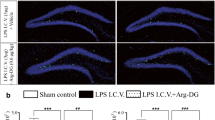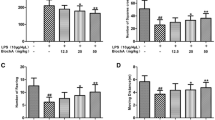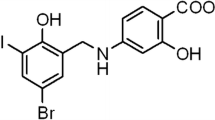Abstract
Aspirin (ASA) is one of the most widely used nonsteroidal anti-inflammatory drugs. ASA has primarily been used to treat headaches, rheumatic pain, and inflammation, but its therapeutic effects have recently been demonstrated on a range of disorders, including those of the central nervous system. In this study, we investigated whether ASA is neuroprotective in inflammation-mediated neurodegenerative diseases. Pretreatment with ASA reduced the lipopolysaccharide (LPS)-induced degeneration of dopaminergic (DA) neurons in mesencephalic neuron–glia cultures in a dose-dependent manner. The neuroprotective effect of ASA was attributed to the inhibition of microglial activation because of its observed inhibitory effects on LPS-stimulated nitric oxide, tumor necrosis factor-α, and superoxide production by microglial cells. Moreover, ASA increased the production of the anti-inflammatory cytokines transforming growth factor beta-1 and interleukin-10 in neuron–glia cultures after stimulation with LPS. Mechanistic studies revealed that the neuroprotective effects of ASA were mediated through the inhibition of nicotinamide adenine dinucleotide phosphate oxidase (PHOX), a key enzyme for superoxide production in microglia. These results suggest that ASA protects DA neurodegeneration by inhibiting the microglial-mediated oxidative stress/inflammatory response and by regulating the production of anti-inflammatory cytokines.






Similar content being viewed by others
References
Akiyama H, McGeer PL (1989) Microglial response to 6-hydroxydopamine-induced substantia nigra lesions. Brain Res 489:247–253
Ariza D, Lima MM, Moreira CG et al (2010) Intranigral LPS administration produces dopamine, glutathione but not behavioral impairment in comparison to MPTP and 6-OHDA neurotoxin models of Parkinson’s disease. Neurochem Res 35:1620–1627
Brochard V, Combadiere B, Prigent A et al (2009) Infiltration of CD4+ lymphocytes into the brain contributes to neurodegeneration in a mouse model of Parkinson disease. J Clin Investig 119:182–192
DeLeo FR, Quinn MT (1996) Assembly of the phagocyte NADPH oxidase: molecular interaction of oxidase proteins. J Leukoc Biol 60:677–691
Di Matteo V, Benigno A, Pierucci M et al (2006a) 7-Nitroindazole protects striatal dopaminergic neurons against MPP+−induced degeneration: an in vivo microdialysis study. Ann NY Acad Sci 1089:462–471
Di Matteo V, Pierucci M, Di Giovanni G et al (2006b) Aspirin protects striatal dopaminergic neurons from neurotoxin-induced degeneration: an in vivo microdialysis study. Brain Res 1095:167–177
Gao HM, Jiang J, Wilson B, Zhang W, Hong JS, Liu B (2002) Microglial activation-mediated delayed and progressive degeneration of rat nigral dopaminergic neurons: relevance to Parkinson’s disease. J Neurochem 81:1285–1297
Gao HM, Hong JS, Zhang W, Liu B (2003a) Synergistic dopaminergic neurotoxicity of the pesticide rotenone and inflammogen lipopolysaccharide: relevance to the etiology of Parkinson’s disease. J Neurosci 23:1228–1236
Gao HM, Liu B, Zhang W, Hong JS (2003b) Critical role of microglial NADPH oxidase-derived free radicals in the in vitro MPTP model of Parkinson’s disease. FASEB J 17:1954–1956
Glass CK, Saijo K, Winner B, Marchetto MC, Gage FH (2010) Mechanisms underlying inflammation in neurodegeneration. Cell 140:918–934
Graeber MB, Streit WJ (2010) Microglia: biology and pathology. Acta Neuropathol 119:89–105
Grili M, Pizzi M, Memo M, Spano P (1996) Neuroprotection by aspirin and sodium salicylate through blockade of NF-kappaB activation. Science 274:1383–1385, New York, N.Y
Hams AS, Barnum CJ, Ruhn KA et al (2011) Delayed dominant-negative TNF gene therapy halts progressive loss of nigral dopaminergic neurons in a rat model of Parkinson’s disease. Mol Ther 19:46–52
Ishida Y, Nagai A, Kobayashi S, Kim SU (2006) Upregulation of protease-activated receptor-1 in astrocytes in Parkinson’s disease: astrocyte-mediated neuroprotection through increased levels of glutathione peroxidase. J Neuropathol Exp Neurol 65:66–77
Kim YS, Joh TH (2006) Microglia, major player in the brain inflammation: their roles in the pathogenesis of Parkinson’s disease. Exp Mol Med 38:333–347
Lavigne MC, Malech HL, Holland SM, Leto TL (2001) Genetic requirement of p47phox for superoxide production by murine microglia. FASEB J 15:285–287
Li JM, Mullen AM, Yun S et al (2002) Essential role of the NADPH oxidase subunit p47 (phox) in endothelial cell superoxide production in response to phorbol ester and tumor necrosis factor-alpha. Circ Res 90:143–150
Liu B, Hong JS (2003) Role of microglia in inflammation-mediated neurodegenerative diseases: mechanisms and strategies for therapeutic intervention. J Pharmacol Exp Ther 304:1–7
Maharaj DS, Saravanan KS, Maharaj H, Mohanakumar KP, Daya S (2004) Acetaminophen and aspirin inhibit superoxide anion generation and lipid peroxidation, and protect against 1-methyl-4-phenyl pyridinium-induced dopaminergic neurotoxicity in rats. Neurochem Int 44:355–360
McCoy MK, Martinez TN, Ruhn KA et al (2006) Blocking soluble tumor necrosis factor signaling with dominant-negative TNF inhibitor attenuates loss of dopaminergic neurons in models of Parkinson’s disease. J Neurosci 26:9365–9375
Miller R, Sun G, Sun A (2007) Cytotoxicity of paraquat in microglial cells: involvement of the PKC delta- and ERK1/2-dependent NADPH oxidase. Brain Res 1167:129–139
Qian L, Block ML, Wei SJ et al (2006) Interleukin-10 protects lipopolysaccharide induced neurotoxicity in primary midbrain cultures by inhibiting the function of NADPH oxidase. J Pharmacol Exp Ther 319:44–52
Qian L, Wei SJ, Zhang D et al (2008) Potent anti-inflammatory and neuroprotective of TGF-beta1 are mediated through the inhibition of ERK and P47phox-Ser345 phosphorylation and translocation in microglia. J Immunol 181:660–668
Qin L, Liu Y, Wang T et al (2004) NADPH oxidase mediates lipopolysaccharide-induced neurotoxicity and proinflammatory gene expression in activated microglia. J Biol Chem 279:1415–1421
Riederer P, Wuketich S (1976) Time course of nigrostriatal degeneration in Parkinson’s disease. A detailed study of influential factors in human brain amine analysis. J Neural Transm 38:227–301
Savitt JM, Dawson VL, Dawson TM (2006) Diagnosis and treatment of Parkinson’s disease: molecules to medicine. J Clin Investig 116:1744–1754
Wang JY, Shum AY, Ho YJ, Wang JY (2003) Oxidative neurotoxicity in rat cerebral cortex neurons: synergistic effects of H2O2 and NO on apoptosis involving activation of P38 mitogen-activated protein kinase and caspase-3. J Neurosci Res 72:508–519
Wilms H, Zecca L, Rosenstiel P, Sievers J, Deuschl G, Lucicus R (2007) Inflammation in Parkinson’s disease and other neurodegenerative disease: cause and therapeutic implications. Curr Pharm Des 13:1925–1928
Acknowledgments
This study was supported by the Natural Science Foundation of China (No. 30900448) and Excellent Youth Scholars Foundation of Ministry of Education of China (NO. 20090142120047).
Author information
Authors and Affiliations
Corresponding author
Rights and permissions
About this article
Cite this article
Wang, F., Zhai, H., Huang, L. et al. Aspirin Protects Dopaminergic Neurons Against Lipopolysaccharide-Induced Neurotoxicity in Primary Midbrain Cultures. J Mol Neurosci 46, 153–161 (2012). https://doi.org/10.1007/s12031-011-9541-3
Received:
Accepted:
Published:
Issue Date:
DOI: https://doi.org/10.1007/s12031-011-9541-3




